-
0
Patient Assessment
- 0.1 Patient demand
- 0.2 Overarching considerations
- 0.3 Local history
- 0.4 Anatomical location
- 0.5 General patient history
-
0.6
Risk assessment & special high risk categories
- 5.1 Risk assessment & special high risk categories
- 5.2 age
- 5.3 Compliance
- 5.4 Smoking
- 5.5 Drug abuse
- 5.6 Recreational drugs and alcohol abuse
- 5.7 Parafunctions
- 5.8 Diabetes
- 5.9 Osteoporosis
- 5.10 Coagulation disorders and anticoagulant therapy
- 5.11 Steroids
- 5.12 Bisphosphonates
- 5.13 BRONJ / ARONJ
- 5.14 Radiotherapy
- 5.15 Risk factors
-
1
Diagnostics
-
1.1
Clinical Assessment
- 0.1 Lip line
- 0.2 Mouth opening
- 0.3 Vertical dimension
- 0.4 Maxillo-mandibular relationship
- 0.5 TMD
- 0.6 Existing prosthesis
- 0.7 Muco-gingival junction
- 0.8 Hyposalivation and Xerostomia
- 1.2 Clinical findings
-
1.3
Clinical diagnostic assessments
- 2.1 Microbiology
- 2.2 Salivary output
-
1.4
Diagnostic imaging
- 3.1 Imaging overview
- 3.2 Intraoral radiographs
- 3.3 Panoramic
- 3.4 CBCT
- 3.5 CT
- 1.5 Diagnostic prosthodontic guides
-
1.1
Clinical Assessment
-
2
Treatment Options
- 2.1 Mucosally-supported
-
2.2
Implant-retained/supported, general
- 1.1 Prosthodontic options overview
- 1.2 Number of implants maxilla and mandible
- 1.3 Time to function
- 1.4 Submerged or non-submerged
- 1.5 Soft tissue management
- 1.6 Hard tissue management, mandible
- 1.7 Hard tissue management, maxilla
- 1.8 Need for grafting
- 1.9 Healed vs fresh extraction socket
- 1.10 Digital treatment planning protocols
- 2.3 Implant prosthetics - removable
-
2.4
Implant prosthetics - fixed
- 2.5 Comprehensive treatment concepts
-
3
Treatment Procedures
-
3.1
Surgical
-
3.2
Removable prosthetics
-
3.3
Fixed prosthetics
-
3.1
Surgical
- 4 Aftercare
Implant overdentures, introduction
Key points
- Implant overdentures are an excellent treatment option for the edentulous patient
- This type of prosthesis is indicated when patient demands cannot be met either through a fixed implant prosthesis or through a complete denture
- Retention is obtained through use of attachments placed directly on implants or on bar superstructures.
- Adequate cleaning and hygiene measures and maintenance of the removable denture and intraoral retention elements are crucial for longterm clinical success
Advantages of implant overdentures and principle considerations
Some patients present with soft and hard tissue defects that cannot be addressed by a fixed implant prosthesis when esthetics, phonetics and oral hygiene access are considered. In these patients who have struggled with insufficient complete denture function, implant overdentures offer necessary retention and stability and replacement of lost hard and soft tissues in a manner that fulfils esthetic, phonetic, and functional requirements.
Patients treated with implant overdentures have significantly higher masticatory, functional and life quality scores than patients wearing conventional complete dentures. In addition, oral hygiene access is easier when compared to a fixed implant prosthesis due to the removable nature of the restoration.
Fixed versus removable prosthesis design
Most patients prefer fixed restoration designs to have the feel of 'natural teeth' and in most situations with low to moderate bone atrophy and when the patient is able to perform an adequate oral hygiene, fixed implant restorations will be a suitable and comfortable treatment option. In situations with considerable bone loss an implant-retained overdenture construction is usually the option of choice in order to restore the vertical dimension.
Given the extra cost associated with the fabrication of the superstructure, fixed implant-supported dentures are initially usually more expensive than implant-retained overdentures. However, fixed implant-supported dentures appear to have fewer ongoing routine maintenance requirements than implant-retained overdentures (these prostheses can be removed and the patient has to insert and remove them daily).
It can be questioned whether the maintenance costs and technical demands associated with an implant-supported overdenture are warranted when given the option of a fixed prosthesis. Adequate cleaning and hygiene measures and maintenance of the removable denture and intraoral retention elements are crucial for longterm clinical success. Therefore, some patient demands cannot be fully addressed with a fixed prosthesis, e.g. esthetic and functional concerns that are not reconcilable with provision and facilitation of adequate oral hygiene access.
Consequently the implant supported/retained overdenture offers expanded scope for recruiting implant therapy into the routine management of the edentulous patient.
Implant number and position
Utilization of two to four implants leads to excellent prosthesis function and patient satisfaction. During the treatment planning phase, it is important to ensure sufficient inter-arch space to avoid fabricating a thin prosthesis that is vulnerable to fracture. In general, when the inter-arch space is limited, there may not be sufficient space to use a bar superstructure and attachments should be placed directly on implants. Ideally, implants are placed evenly across the edentulous arch. However, if there is insufficient bone in posterior regions, distributing the implants in the inter-foraminal region of the mandible and the inter-maxillary sinus region of the maxilla is indicated.
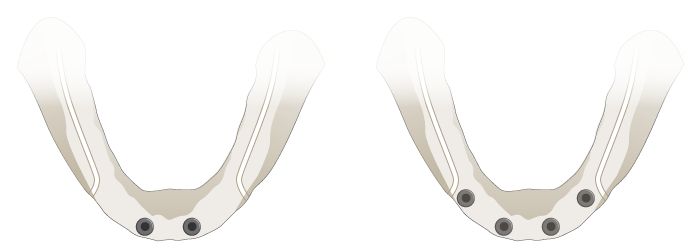
Component selection
A variety of retention mechanisms are available including ball/o-ring, locators, ERA, magnets, etc. All of these options have advantages and disadvantages. The locator system offers some advantages with regards to the ease of maintenance, the option of different degrees of retention and relatively low abutment profile for use in patients with limited inter-arch space.

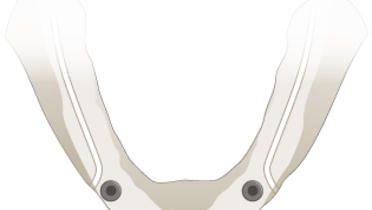
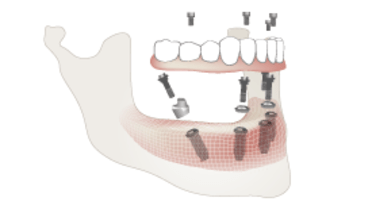
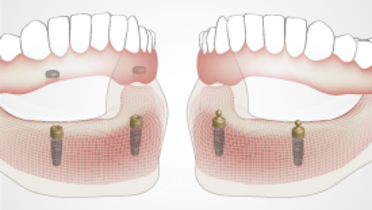
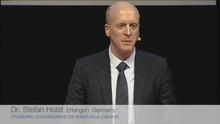






Where can I find financial assistance in getting lower over dentures?